0. Foreword
For domestic scientific research scholars, HowNet is needed almost every day. For us, CNKI is a place to retrieve and download documents. So how to effectively use HowNet? Everyone should have their own habits and methods, there is no best, only the one that suits you better. This blog post is just to share how I usually use HowNet. I hope it can provide you with some help, and you are welcome to share better methods with me.
1. HowNet search process
Step 1: Open HowNet
Identify topics or keywords. Usually, once you have determined your own research direction, you will naturally know the topic or keywords, and you can directly select the topic for a large-scale search of literature.
Step 2: Enter a topic or keyword
For example: subject "Bearing Fault Diagnosis", the search results are as follows:
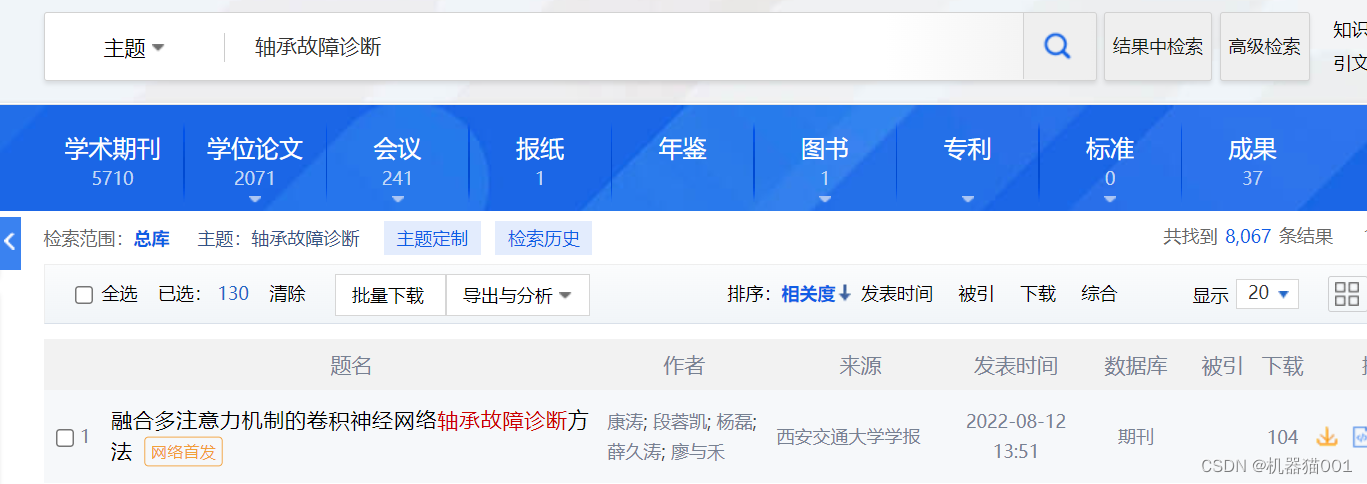
The search results show that there are 5,710 academic journals and 2,071 dissertations .....
Let's analyze academic journals first : click to select an academic journal , then click " Export and Analysis -- Visual Analysis -- Analysis of All Search Results ", as shown in the figure below:
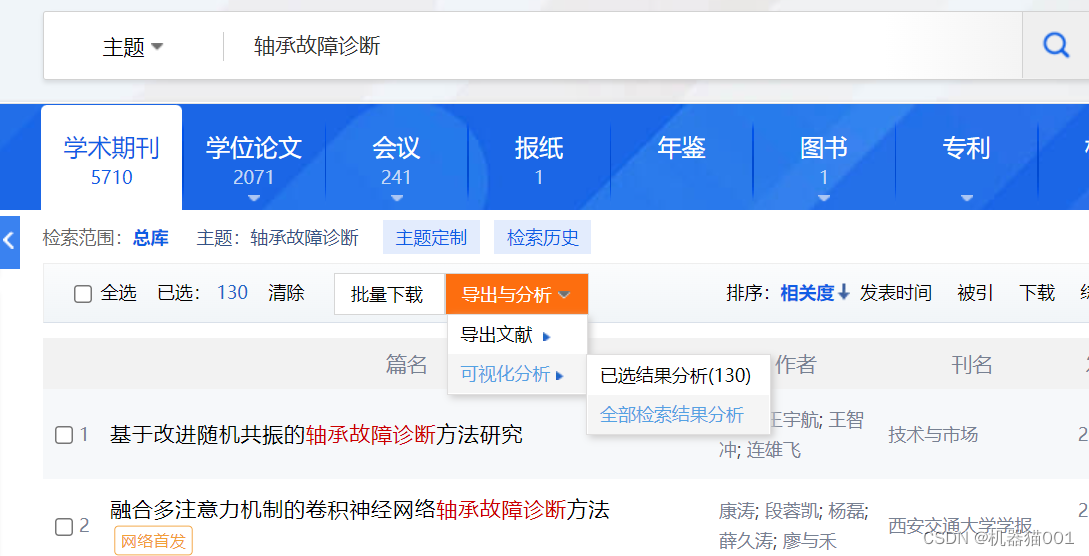
The page that comes out after clicking contains the following content:
①Publishing trends: Under the search scope of 5,710 academic journals , the number of articles published each year can be seen from this direction.
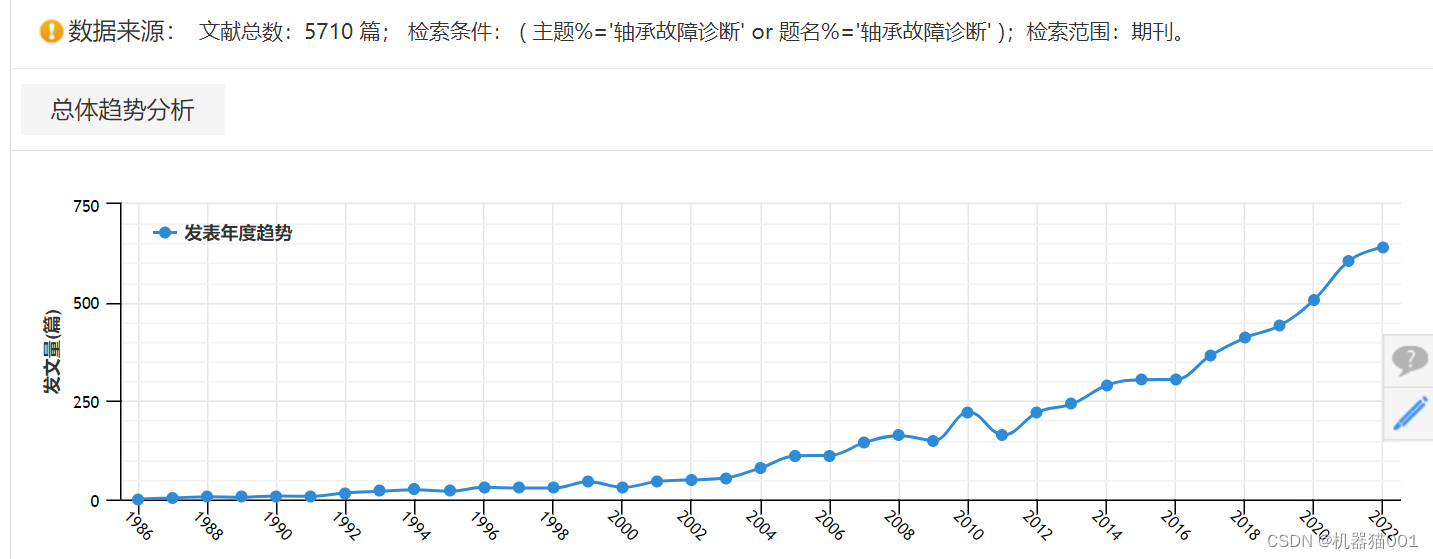
② Distribution of subject terms: Under the retrieval scope of 5710 academic journals , what are the relevant subject terms for bearing fault diagnosis
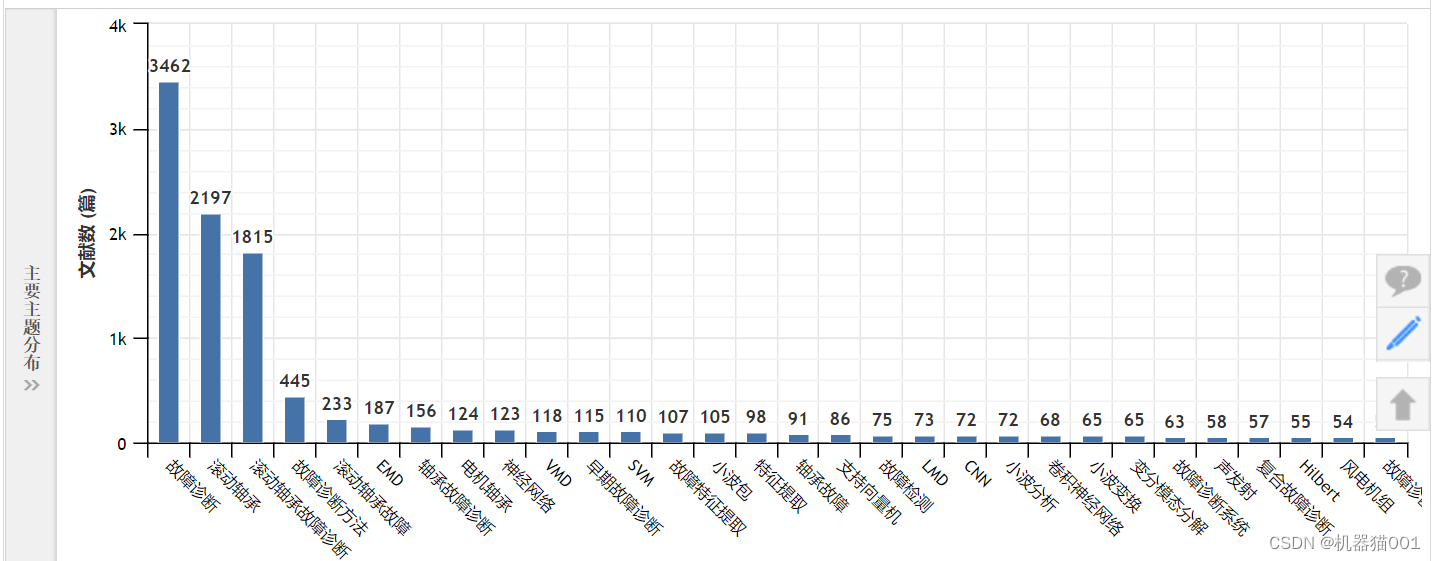

③ Discipline distribution: Under the search scope of 5,710 academic journals , understand which disciplines are mainly concerned with bearing fault diagnosis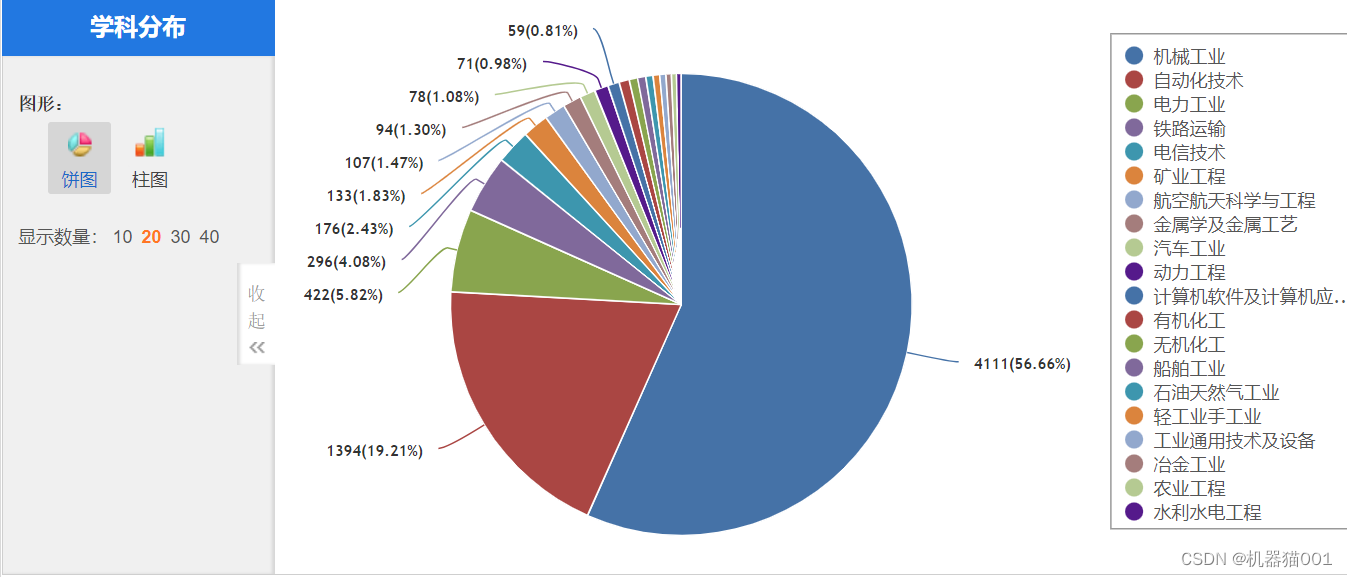
④Research level distribution: Under the retrieval scope of 5,710 academic journals , understand whether the current research on bearing fault diagnosis is mainly used for technology development, applied basic research, or others. . .

⑤ Distribution of journals: Under the retrieval scope of 5,710 academic journals , which journals are mainly included in bearing fault diagnosis papers

The above figure can obtain the catalog of journals with the most papers on bearing fault diagnosis. This will help scholars understand which journals have included papers in this direction, and then understand which of these journals are more authoritative, and then can search for papers published by authoritative journals in a targeted manner. (The papers published in authoritative journals are relatively representative, which is more efficient than finding a needle in a haystack to select good papers!)
⑥Institution distribution: Under the search scope of 5,710 academic journals , understand which institutions publish papers on bearing fault diagnosis, that is, which institutions are researching this direction.

According to the number of articles published in the above picture, you can choose 10, 20 or 40 institutions to search the top 30 institutions, and you can choose to display them as pie chart or bar chart. It can be seen that Southwest Jiaotong University has published the largest number of papers on bearing fault diagnosis, followed by North China Electric Power University. At this time, you can find out whether the big cows or powerful laboratories in the field of bearing fault diagnosis research are located in these schools, or in other words Are the mechanical majors of these schools particularly good? Find out who are the competitors or partners who are researching this direction with you. If you have the opportunity to have a targeted understanding and exchange at the academic seminar Contact by email to exchange academic issues).
⑦Division of funds: Under the search scope of 5710 academic journals , understand which funds support these papers.

Based on the number of publications in the above picture, select the pie chart to display the names of the top 20 funds. You can ask your tutor or search online which funds are more powerful, and then search for papers supported by these funds in a targeted manner. The method is shown in the figure below: In Figure 2 page, select Fund in the search column , and then enter the National Natural Science Foundation of China in the search bar, as shown in the figure below
Note that next click on the search results, the results are as follows: These papers are supported by the National Natural Science Foundation of China

Using the same method, in ⑤⑥, you can also select the author unit or the name of the journal in the search column , and then click on the search results , and the obtained papers are all papers published by the institution or a certain journal;

Through the above analysis, to some extent, I have a preliminary understanding of the direction of my research. Next, I would like to share how to read papers.
2. How to read the literature and quickly understand the ins and outs of your research direction
Step 1: Understand the research status, major and difficult points of your own direction, and determine your research goals and directions ! (What problems can I research on breakthrough methods, and to what extent, is it just for graduation or to live up to my years and climb the peak?)
Of course, the most important thing is to choose the right paper, and let the paper guide you to understand the direction of your research. Either you choose an authoritative review paper, or you download a few recent doctoral dissertations to read. Personally, I prefer to read doctoral dissertations, because the depth of thinking is sufficient, and the summary and analysis of problems are more comprehensive. Reading the preface and introduction of doctoral dissertations can allow you to quickly understand and understand this direction more deeply.
The doctoral dissertation search method is as follows: On the basis of the page in Figure 2, select Dissertation--PhD

The result is as follows:

Download all the papers from the last one or two years, and give priority to reading the most recent papers with higher citation rates. I believe that after reading the prefaces and introductions of several doctoral dissertations, I have a basic understanding of the research status of the research direction and the key directions to be broken through (difficulties and problems to be solved). If I still don’t know anything, I can only say that it is not enough Intentions, no serious thinking and summary. If you do this step well, you should know your goals and directions (that is, which problems in this field you can solve!).
Step 2: Determine the direction of the goal, conduct in-depth research, and train scientific research thinking
After determining your own research direction (this is different from the "bearing fault diagnosis" research direction given to you by your instructor), you need to read a lot of literature that is more suitable for your direction, to learn more methods, and to study in depth Theoretical knowledge, continuous thinking, and continuous summarization. At this stage, please do not limit yourself to the large field of "bearing fault diagnosis" to search for literature, please broaden your horizons, and use your own small direction as a guide to search for papers (not limited to the industry), there may be Papers from all walks of life, but you focus on methods! You have to learn how to apply the methods mentioned in papers in other industry fields to solve your own problems. Persist at this stage, develop a good habit of reading a lot, and bring in your own thinking and train your own thinking. This is the important foundation and foundation for you to become a qualified scientific researcher, and after this process of training, your overall Logical thinking ability and scientific research ability will be greatly improved, which can be said to be beneficial for life.
The literature retrieval method needs to be continuously explored and summarized by oneself. This blog post only mentions some general steps, hoping to help the students.